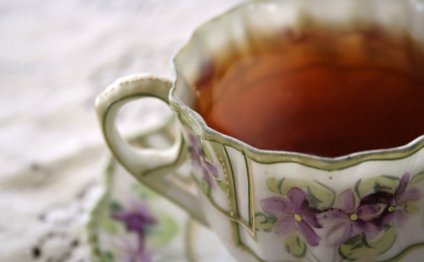
History of Afternoon Tea parties
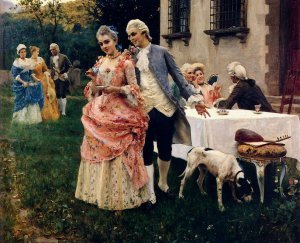 THE HISTORY OF AFTERNOON TEA
THE HISTORY OF AFTERNOON TEA
There are many ideas about tea etiquette and the when and how tea was first made popular in England. Charles the II grew up in exile at The Hague and thus was exposed to the custom of drinking tea. He married Catharine of Braganza who was Portuguese and who also enjoyed tea. Catharine had grown up drinking tea in Portugal-the preferred beverage of the time. It is said that when she arrived in England to marry Charles II in 1662, she brought with her a casket of tea. She became known as the tea-drinking queen — England’s first.
In England she invited her friends into her bedroom chamber to share tea with her. In the 18th century it was custom for highborn ladies to receive callers with their morning tea while still lounging in bed.
Queen Anne drank tea so regularly that she substituted a large bell-shaped silver teapot for the tiny Chinese tea pots. The earliest tea service dates from her reign. Coffeehouses were popular in the 18th century. Women were forbidden to enter them. In 1675 members of the government persuaded Charles II to suppress them as centers of sedition. The men were so outraged that the king canceled the proclamation. Coffeehouses were also called “penny universities, ” in reference to the conversation they bred and the penny admittance fee.
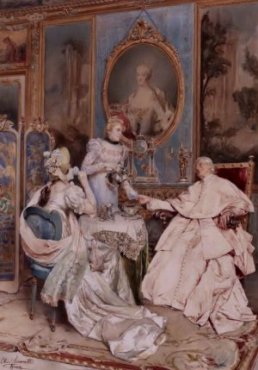 During the 18th century tea gardens became popular. The whole idea of the garden was for ladies and gentlemen to take their tea together outdoors surrounded by entertainers. They attracted everybody including Mozart and Handel. The tea gardens made tea all the more fashionable to drink, plus they were important places for men and women to meet freely.
During the 18th century tea gardens became popular. The whole idea of the garden was for ladies and gentlemen to take their tea together outdoors surrounded by entertainers. They attracted everybody including Mozart and Handel. The tea gardens made tea all the more fashionable to drink, plus they were important places for men and women to meet freely.
While drinking tea as a fashionable event is credited to Catharine of Braganza, the actual taking of tea in the afternoon developed into a new social event some time in the late 1830’s and early 1840’s. Jane Austen hints of afternoon tea as early as 1804 in an unfinished novel.
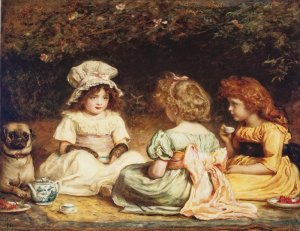 It is said that the afternoon tea tradition was established by Anne, Duchess of Bedford. She requested that light sandwiches be brought to her in the late afternoon because she had a “sinking feeling” during that time because of the long gap between meals. She began to invite others to join her and thus became the tradition.
It is said that the afternoon tea tradition was established by Anne, Duchess of Bedford. She requested that light sandwiches be brought to her in the late afternoon because she had a “sinking feeling” during that time because of the long gap between meals. She began to invite others to join her and thus became the tradition.
PROPER ETIQUETTE FOR A TEA PARTY
Just like the royalty and upper class did in the original tea parties, it is important to use proper etiquette when attending a formal tea party. Here are a few tea party etiquette tips to remember:
After sitting down, put purse on lap or behind you against chair back
Unfold napkin and make sure to place it on your lap. If you must leave the table temporarily, place napkin on chair. Never blot or wipe your lipstick with a linen or cloth napkin. Lipstick stains rarely come out in the wash.
Never, ever use your napkin as a handkerchief. Please excuse yourself from the table and go to the ladies room. The hostess will signal the end of the tea by picking up her napkin. Everyone else will then pick up their napkin by the center and loosely lay to the left of their plate.
Sugar is placed in your teacup first, then thinly sliced lemon. If you like to have milk in your tea, add it after the tea is poured. At one time it was traditional to pour the milk into the cup before the tea. This was done to prevent the glaze on delicate tea cups from cracking. We do not have that problem today, so add the milk after the tea so that you can judge how much to use based on the color change.
RELATED VIDEO
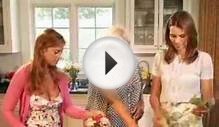
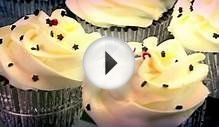
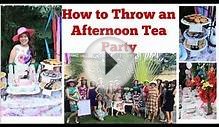
Share this Post
Related posts
British Afternoon Tea offers
Afternoon Tea is quite an event at The Chesterfield Mayfair - a member of The Tea Guild, a prestigious and unique organisation…
Read MoreWhat is the History of Afternoon Tea?
Tea consumption increased dramatically during the early nineteenth century and it is around this time that Anna, the 7th…
Read More
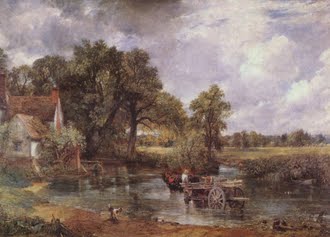 The culture of England refers to the idiosyncratic cultural norms of England and the English people. Because of England's dominant position within the United Kingdom in terms of population, English culture is often difficult to differentiate from the culture of the...
The culture of England refers to the idiosyncratic cultural norms of England and the English people. Because of England's dominant position within the United Kingdom in terms of population, English culture is often difficult to differentiate from the culture of the...










